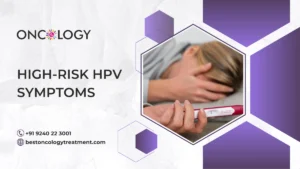Cancer is a complex disease that often progresses through various stages, which are critical in determining the type of treatment and prognosis. In this article, we will explore the stages of cancer, focusing on the commonly used cancer stages 1-4, and delving into key aspects such as stage 4 cancer symptoms and the stage 4 cancer survival rate. Whether you’re navigating a diagnosis or seeking information for a loved one, understanding these stages is essential in making informed decisions.
Introduction to the Stages of Cancer
Cancer staging is a system used by healthcare professionals to describe how far the cancer has spread within the body. It’s a crucial step in both diagnosis and treatment planning. By understanding the stages of cancer, doctors can recommend appropriate treatment options and give patients a clearer idea of their prognosis. These stages, numbered from 0 to 4, indicate the size of the tumor, whether it has spread, and how far.

How Common is Cancer?
Cancer is a leading cause of death globally. According to the World Health Organization (WHO), approximately 1 in 6 deaths worldwide are due to cancer. The most common cancers vary by region but some, such as lung cancer, breast cancer, and colorectal cancer, are globally prevalent. Early detection and treatment are critical for improving outcomes, particularly as the cancer progresses through its stages.
- Breast cancer (women)
- Prostate cancer (men)
- Lung cancer
- Colorectal cancer
Cancer stages 1-4 are used to describe how far cancer has spread and are essential for determining the treatment approach.
Types of Cancer
There are types of cancer, classified based on where the cancer starts in the body. Early stages of cancer Some of the most common types include:
- Breast Cancer: Begins in the cells of the breast, most common among women.
- Lung Cancer: Develops in the lungs, often caused by smoking.
- Prostate Cancer: Affects the prostate gland in men.
- Colorectal Cancer: Affects the colon or rectum, common in older adults.
- Skin Cancer: Develops in the skin cells, often due to overexposure to UV radiation.
- Leukemia: Cancer of the blood and bone marrow.
Understanding these various types is the first step in recognizing symptoms and determining the stages of cancer 1-4.
Symptoms of Cancer
The symptoms of cancer vary depending on the type, location, and stage of cancer. It’s important to be aware of early warning signs, as early detection can significantly impact survival rates. Below are some common symptoms to watch for:
- Unexplained weight loss: Sudden, unexplained weight loss can be a sign of cancer.
- Fatigue: Persistent fatigue not relieved by rest may indicate a serious condition.
- Pain: Pain that doesn’t go away or worsens over time could suggest cancer.
- Changes in the skin: Unusual moles, growths, or changes in skin color can be a sign of skin cancer.
- Persistent cough or hoarseness: A constant cough, especially if accompanied by blood, may be linked to lung cancer.
Stage 4 cancer symptoms are typically more severe and often include pain, Early stages of cancer difficulty breathing, extreme weight loss, and symptoms specific to the cancer’s organ of origin. For example, stage 4 lung cancer symptoms might include shortness of breath, coughing up blood, and chest pain.
Risk Factors
While cancer can develop without any clear cause, several risk factors can increase the likelihood of developing cancer. These include:
- Genetic factors: Family history of cancer may increase your risk.
- Lifestyle choices: Smoking, excessive alcohol consumption, and a poor diet can increase cancer risk.
- Environmental factors: Exposure to harmful chemicals, radiation, and pollutants.
- Age: The risk of most cancers increases with age, particularly over the age of 50.
- Infections: Certain viruses (e.g., HPV, Hepatitis B) can increase cancer risk.
- Chronic conditions: Conditions like inflammatory bowel disease can increase cancer risk.
Understanding these risk factors is essential in reducing the risk and for the early detection of cancer, especially as it progresses through the cancer stages 1-4.
Prevention
While some cancers cannot be prevented, certain lifestyle changes and early screenings can significantly reduce your risk. Consider the following preventative measures:
- Quit smoking: Smoking is linked to many cancers, particularly lung cancer.
- Limit alcohol consumption: Excessive drinking is linked to cancers like liver and breast cancer.
- Maintain a healthy diet: A diet rich in fruits, vegetables, and fiber can reduce cancer risk.
- Exercise regularly: Physical activity lowers the risk of several cancers, including colorectal and breast cancer.
- Sun protection: Use sunscreen and avoid excessive sun exposure to reduce the risk of skin cancer.
- Vaccination: Vaccines like the HPV vaccine can reduce the risk of certain cancers.
By adopting these healthy habits, you can potentially reduce the likelihood of developing cancer or catching it in its early stages.
Diagnosis and Tests
Early diagnosis is crucial for a better prognosis. Various tests are used to diagnose cancer, which include:
- Blood tests: Detect cancer markers or other abnormalities that could suggest cancer.
- Imaging tests: X-rays, CT scans, MRIs, and ultrasounds are used to visualize tumors.
- Biopsy: A sample of tissue is taken from the affected area to check for cancer cells.
- Endoscopy: Used to view internal organs like the colon or stomach and take tissue samples.
Doctors also classify cancer according to its stages 1-4 to determine the extent of the disease:
- Stage 1: The cancer is localized and has not spread.
- Stage 2-3: The cancer is more extensive but still localized in one area.
- Stage 4: Cancer has spread to other organs or tissues.
Stage 4 cancer survival rate varies greatly depending on the early stages of cancer the treatment available, and how early it is detected.
Cancer Stages 1-4: A Detailed Breakdown
Stage 0: Carcinoma in Situ
This is the earliest stage of cancer. At this point, abnormal cells are present but have not spread to nearby tissues. In many cases, stage 0 cancer can be treated successfully and may not recur if caught early.
Stage 1: Early Stage Cancer
In stage 1 cancer, the cancer is localized, meaning it hasn’t spread to other parts of the body. The tumor is usually small and hasn’t grown into nearby tissues or lymph nodes. Early detection is key at this stage, as the cancer is often highly treatable.
- Tumor Size: Small, localized.
- Spread: None to nearby tissues or lymph nodes.
- Treatment: Often includes surgery, radiation, or chemotherapy, with a high success rate.
Stage 2: Localized Cancer
Stage 2 cancer indicates that the cancer has grown but remains within the region where it started. The tumor may be larger, and cancer cells may have spread to nearby lymph nodes but not to distant body parts.
- Tumor Size: Larger than Stage 1, may affect nearby lymph nodes.
- Spread: Confined to the local area and nearby lymph nodes.
- Treatment: Surgery, possibly combined with radiation and chemotherapy, is common.
Stage 3: Regional Spread
By stage 3, the cancer has grown larger and may have spread to nearby tissues and lymph nodes, but it hasn’t yet metastasized to distant organs. This stage is more challenging to treat and may require a combination of treatments.
- Tumor Size: Large, affecting nearby tissues.
- Spread: Nearby lymph nodes and tissues, but not distant parts of the body.
- Treatment: Often includes aggressive therapies like surgery, radiation, and chemotherapy.
Stage 4: Metastatic Cancer
Stage 4 cancer, also known as metastatic cancer, is the most advanced stage. At this point, the cancer has spread to distant parts of the body, affecting organs far from the original tumor site.
- Tumor Size: May vary, but cancer has spread beyond the original site.
- Spread: Cancer cells have spread to other organs such as the lungs, liver, or bones.
- Treatment: Focuses on managing symptoms, prolonging life, and improving quality of life, often using systemic therapies like chemotherapy, immunotherapy, and targeted therapy.
Stage 4 Cancer Symptoms: What to Expect
At stage 4 cancer, the symptoms can be widespread and vary based on the affected organs. Some common symptoms of stage 4 cancer include:
- Chronic Pain: Especially if cancer has spread to the bones or other sensitive areas.
- Weight Loss: Unexplained loss of appetite and severe weight reduction.
- Fatigue: Constant tiredness that doesn’t improve with rest.
- Difficulty Breathing: Especially if the lungs are affected.
- Jaundice: Yellowing of the skin or eyes, particularly if the liver is involved.
Recognizing these symptoms early and consulting with healthcare professionals can lead to better management of the disease.
Stage 4 Cancer Survival Rate: What You Need to Know
While stage 4 cancer presents significant challenges, survival rates vary depending on the type of cancer, the individual’s overall health, and advancements in treatment. In recent years, new therapies have improved outcomes for some patients with stage 4 cancer. Early stages of cancer however, survival rates are often lower compared to earlier stages.
- Five-Year Survival Rate: This statistic refers to the percentage of patients who live at least five years after their cancer is diagnosed. For stage 4 cancer, the survival rate is generally lower, but varies widely by cancer type. For example, stage 4 breast cancer has a five-year survival rate of about 27%, while stage 4 lung cancer’s rate is closer to 5%.
- Factors Influencing Survival:
- Type of Cancer: Some cancers, like prostate or breast cancer, respond better to treatment at stage 4 compared to others.
- Treatment Options: New therapies, including targeted treatments and immunotherapy, can improve outcomes.
- Overall Health: Patients with fewer comorbidities tend to have better survival prospects.
Why Cancer Staging Matters
Understanding the stages of cancer is crucial for both patients and doctors. It helps in:
- Determining Treatment: Different stages require different treatments, ranging from surgery to systemic therapies.
- Predicting Outcomes: While staging provides an overview of how advanced cancer is, it also offers insight into prognosis.
- Communication: Cancer staging gives a universal language for healthcare providers, patients, and families to discuss the condition effectively.
Common Cancer Staging Systems
Two of the most commonly used systems to describe cancer stages are:
- TNM System: Stands for Tumor (T), Nodes (N), and Metastasis (M). This system describes the size of the tumor (T), whether cancer has spread to nearby lymph nodes (N), and whether it has spread to other parts of the body (M).
- Number System: A simpler system that categorizes cancer into stages 0-4, with stage 4 being the most advanced.
Conclusion
Understanding the stages of cancer is crucial for effective treatment planning and managing expectations. From stage 1, where the cancer is localized and highly treatable, to stage 4, where it has spread to other parts of the body, each stage presents unique challenges and opportunities for treatment. While stage 4 cancer symptoms can be severe, advances in medical treatments have improved the stage 4 cancer survival rate for many types of cancer. The key takeaway is that early detection significantly boosts survival chances, making regular screenings and consultations with healthcare providers essential.




